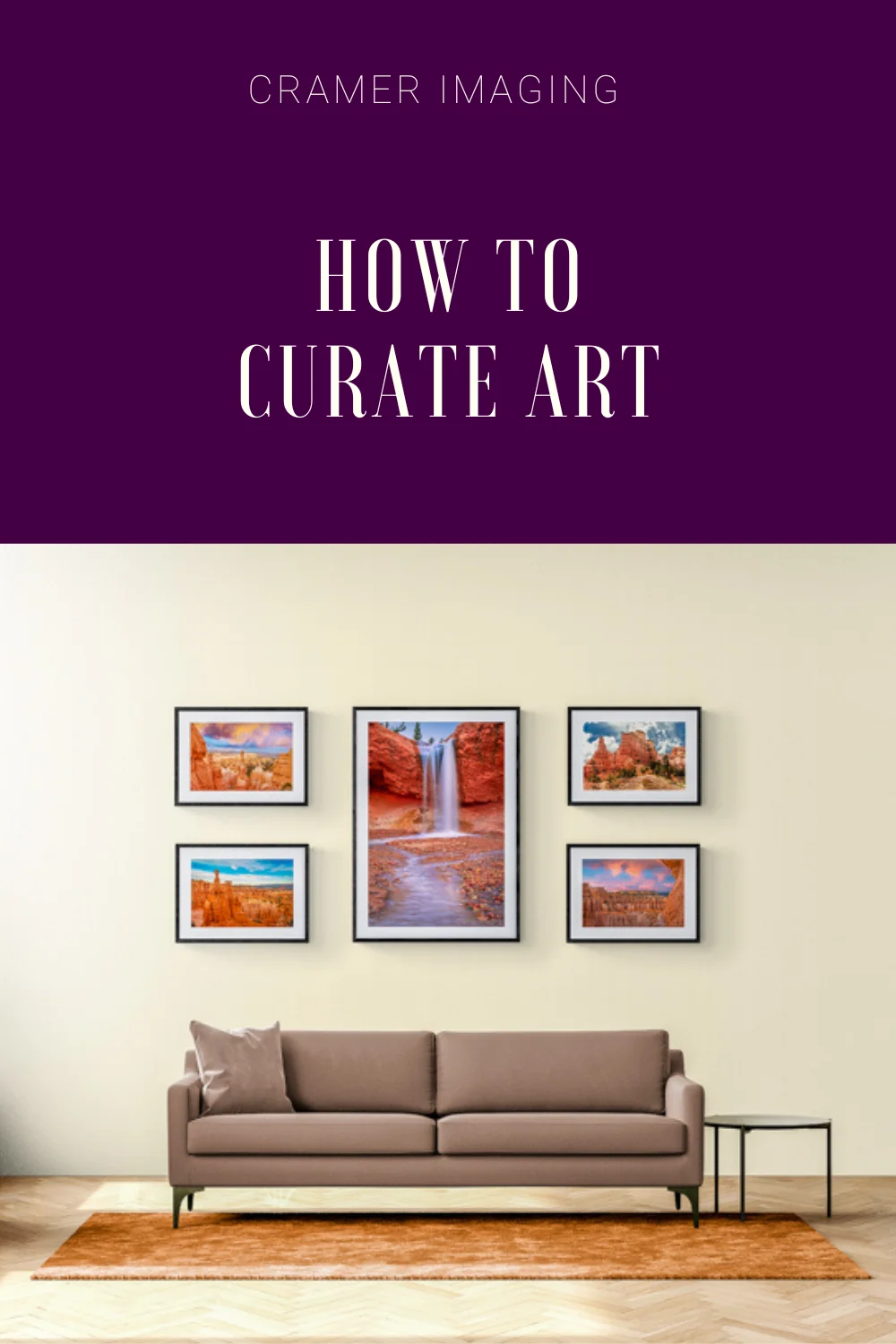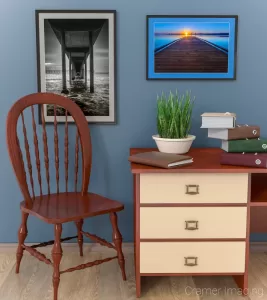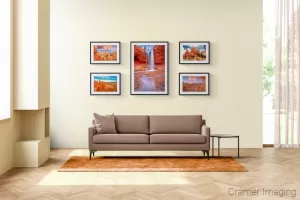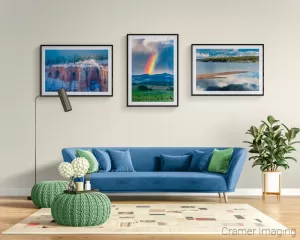
Being as I am, a landscape photographer, obviously, I want to sell you some of my photography as wall art. However, what you purchase should work with the rest of your wall decorations. So, that got me thinking about how such coordination works. In fact, this line of thought pointed me straight in the direction of how to curate art. After all, that’s more or less what you do when you choose to buy one of my photos: you add the print to your already curated selection. So, let’s dive into how to curate art.
 As is always helpful, let’s start things off with a dictionary definition to help out. I must also emphasize that you must choose the verb definition and not the noun definition. The noun version refers to a religious position within a particular group of churches which has nothing to do with art. So let’s look at the verb definition from the Merriam-Webster dictionary.
As is always helpful, let’s start things off with a dictionary definition to help out. I must also emphasize that you must choose the verb definition and not the noun definition. The noun version refers to a religious position within a particular group of churches which has nothing to do with art. So let’s look at the verb definition from the Merriam-Webster dictionary.
to select (the best or most appropriate) especially for presentation, distribution, or publication [sub-definition included]; to select and organize (artistic works) for presentation in (something, such as an exhibit, show, or program)
This definition sounds simple on the surface. However, there are nuances which I can’t easily articulate on my own. So, as I’m no interior designer nor professional curator, I needed to do some research. During my research, I stumbled upon this quote. I felt it was rather enlightening on the subject of art curation.
Forbes’ Steven Rosenbaum questions whether the word ‘curate’ is overused or, rather, misused? “Curating used to be a word we only used in museums. Somewhere in the last year, ‘curate’ has morphed into a word people are using anytime they pick something and want it to sound like it’s more than just picking something. Curation,” he writes, “is an editorial process. It’s a mix of art and science. It requires a clear and definable voice, an editorial mission, and an understanding of your audience and community.”
Historically, curators of the late 19th and early 20th centuries were artists, art dealers, and museum directors. In Latin, the word “curar” means “to take care.” The traditional definition of ‘curate’ is the deliberate selection of objects or content which are to be shown to the public in a museum or institution, most typically in the form of art. To ‘curate an exhibit’ is to create a collection of works by the same or different artists that have some commonality for an involved interpretation of the material, for an intended audience.
So, beyond this rather snobby-sounding and vacuous explanation and more useful history, I gleaned the following. Curation is a deliberate process of selection. It revolves around a particular purpose such as museum exhibits. However, you can apply curation in this fashion to other applications too. So, then, I delved more into how to curate art. The following list are suggestions on how to proceed with art curation. They are not rules. But you might find them useful in your beginning attempts to curate your own art.
When you begin art curation, you first begin with the space you have to work with. How to you want to present the room? What feeling do you want your guests to feel as they enter and observe? Do you want them to feel bright and cheery? How about cool and calm? These are the most common vibes which people choose. However, you may choose another energy such as a nostalgic ode to the past or whatever else tickles your fancy.
These images are merely examples of a room’s energy. The first is bright, warm, and energetic. The second is darker, cooler, and calming. Something like either example may be your end goal. Or, you may pursue something different altogether. However, it does well to have the end goal in mind from the start.
Once you know where you want to go, then you can choose how you want to arrive. You can create a theme for your art curation. With a wide variety of themes available, you have plenty to choose from. You may choose a theme based upon many different elements. Such elements include location, color, pattern, artist, art style, and more. Upon this foundation will you curate your art.

Oftentimes, your first choices for a room include paint color and furniture selections. Rarely does paint color precede furniture these days. So, we begin with roots of furniture. If you don’t already have the furniture you plan on working with, then you will acquire it.

It will not do to choose or even curate art which will clash with the rest of the room you intend to display it in. Take careful thought of your current and planned decor as you select and even curate art. One might even consider this curation effort as creating your own personal art gallery. Read up on that linked article for more information on that subject. This example above shows some thought that way. The color scheme of the room is full of blues, greens, and cool tones. The art displayed mirrors those same general blue and green tones. The art coordinates well with the furniture. This kind of careful consideration yields good results. Less attentiveness might yield similar results but will more likely yield less than satisfactory visual display.
Curating an art collection is not a quick one-and-done business except, perhaps, in rare circumstances. Such circumstances may include buying art from the same artist. However, that is not the way most people curate anything, let alone art.
If you deem that images such as these depicted above would fit into your curation, then each image is a link to the sale page. If you don’t feel that these (or others from all kinds of sources) would work, then don’t buy them for that collection no matter how much you like the pieces individually. This is, after all, the purpose of curation: editorial work to choose elements which will work together for some reason.
Most people don’t have the money to curate an art collection immediately. Oftentimes, this level of disposable income just doesn’t exist for them. So, if this description fits you, expect to take some time in your art curation. It might, in fact, take years to complete. You might never complete it in your lifetime. However, you might depending upon your goals.
One job of a picture frame is to protect the art displayed in it. However, there’s no reason that the frame (and other presentation elements like matting) can’t contribute to your curated art collection. However, one consideration is that the presentation elements should contribute not overpower. You should not immediately see the picture frame before the art inside. There is one way to alleviate this possible visual issue: coordination of frames.

If you take thought for matching or coordinating the frames, then they will fade into the background more and feature the art within much more. Keep a general color scheme (if not matched color scheme) and general consistency with thickness, material, and ornateness. Observe how these matching frames enhance and do not distract from the beautiful landscape photos contained inside. This level of thought will complete your careful curation.
Curating art is a subjective editorial process of choosing which pieces of art will work together and which will not based upon a given set of criteria. Most of the time, you will only require such skills in positions like museum curation or even art gallery employees. However, you can apply the principles to your own personal art collection and display.
With proper attention to the principles laid out here, you may create a private art collection (great or small) which could rival any professionally curated collection. Please share your thoughts and experiences with curating your own art collection in the comments section below. We would love to learn of successes and pitfalls together.


Receive monthly updates in your inbox from us.

Join our email-only photo of the week club to get the full stories behind how we captured our favorite fine art landscape photos.
We respect your privacy
No More Results